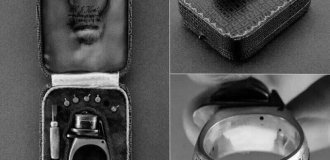Glass sponge: ghost gardens at the bottom of the abyss (9 photos)
Do you know the Eiffel Tower? We declare with confidence that this is total plagiarism. Glass sponges developed advanced engineering solutions at least 540 million years ago! When did homo sapiens appear there? That's right, we are not suitable for these sponges as foreman! 
So, Stasyan, we got here to climb. How to get out now? In the photo, some deep-sea crustaceans decided to hide inside the sponge.
Glass sponges, or six-rayed sponges, are a huge and truly amazing class of invertebrate animals. Scientists count about 600 types of glass, but given their lack of knowledge, there may actually be much more sponges. 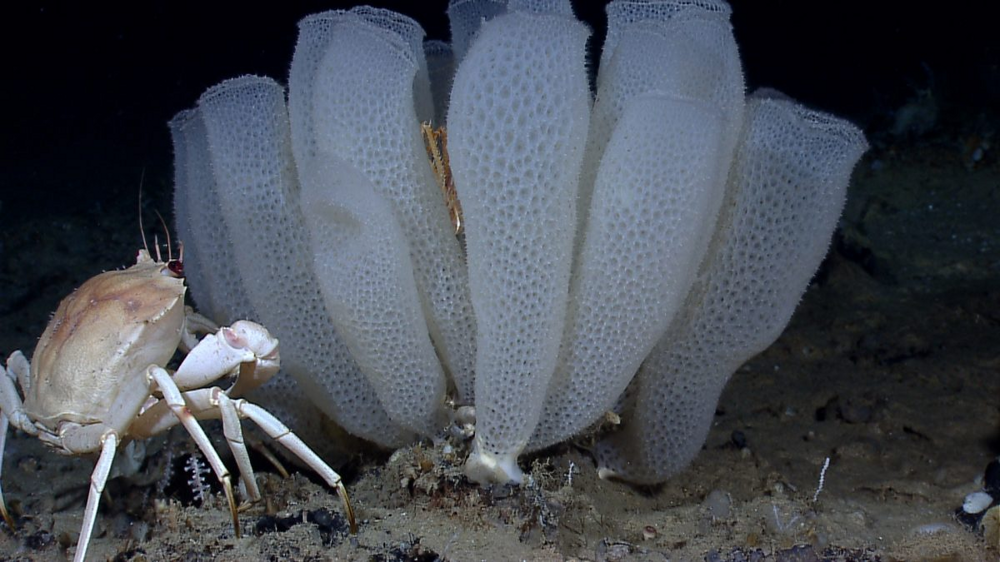
So, are you alive? Or is it already lifeless? Or half-alive and half-dead? Unclear...
Outwardly, most of them look similar to each other and do not at all resemble living beings. An observer unenlightened in the intricacies of biology will easily confuse a sponge with a ghost of the ocean, whose ethereal remains are chained to the bottom by invisible ballast. The reef of translucent bodies can stretch 20 meters in height and 7 kilometers in length! Truly a fascinating and frightening sight! 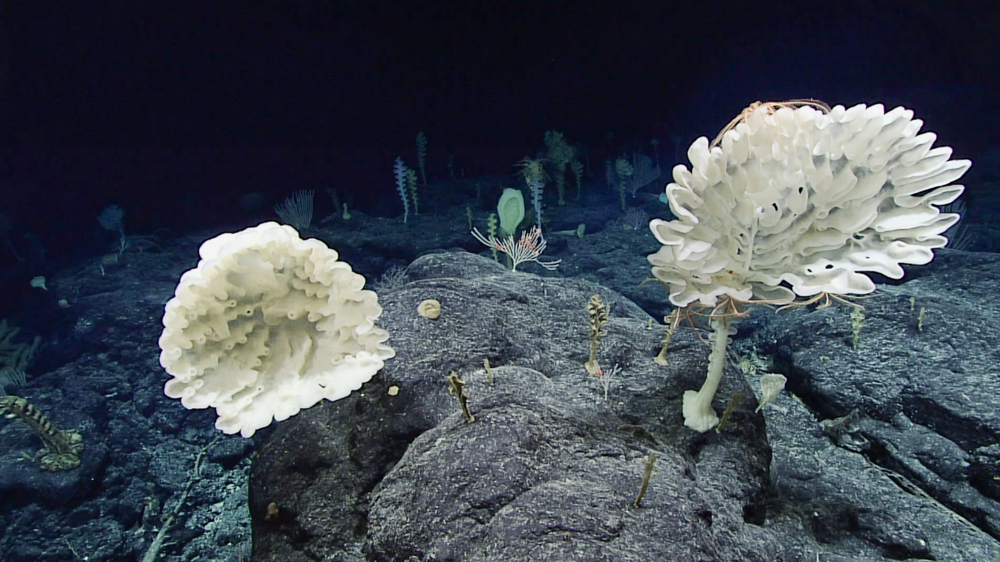
Be careful, friend. Next begins the territory of the afterlife, otherworldly world.
But knowledgeable people noticed many functional solutions in the design of the sponges and put them into practice! And it’s not surprising, because glass sponges are the world’s first architects! As befits ghosts, glass sponges are ancient creatures. So much so that, probably, before their “eyes” the evolution of single-celled living organisms into multicellular compounds took place. But even then, half a billion years ago, they learned to build structures so perfect that modern bipedal engineers take their developments as the basis for modern buildings. 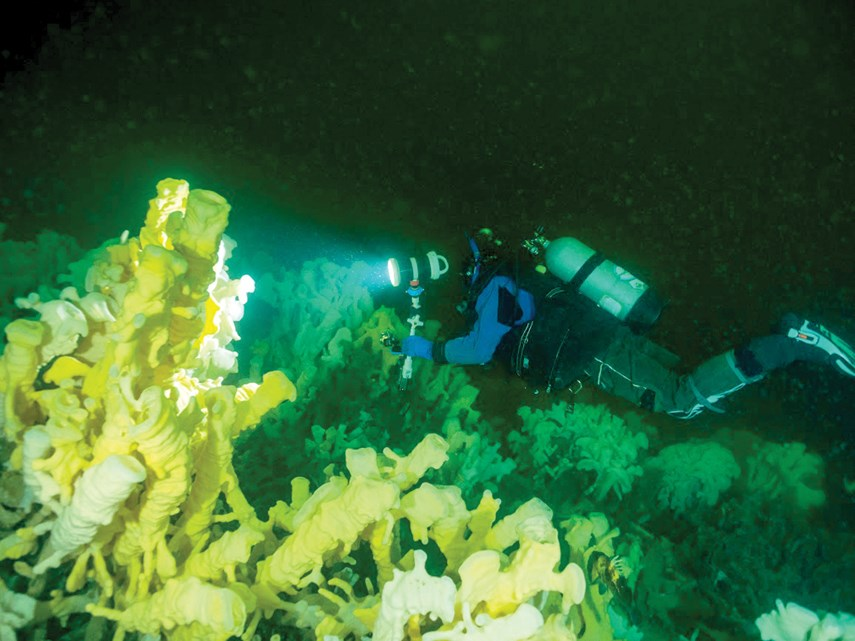
The older the sponge “garden” is, the less transparent it becomes. Breathtaking landscape!
The world-famous Eiffel Tower, the London Cigar Skyscraper, the Barcelona Hotel and many other buildings were designed according to the principles of glass sponges. And this is just the beginning! Leading engineers and researchers say that six-beams will help humanity build better, higher, bigger and more reliably. And not only skyscrapers: the same principles are quite applicable to huge bridges, and even to spaceships! So what is the secret of glass sponges? 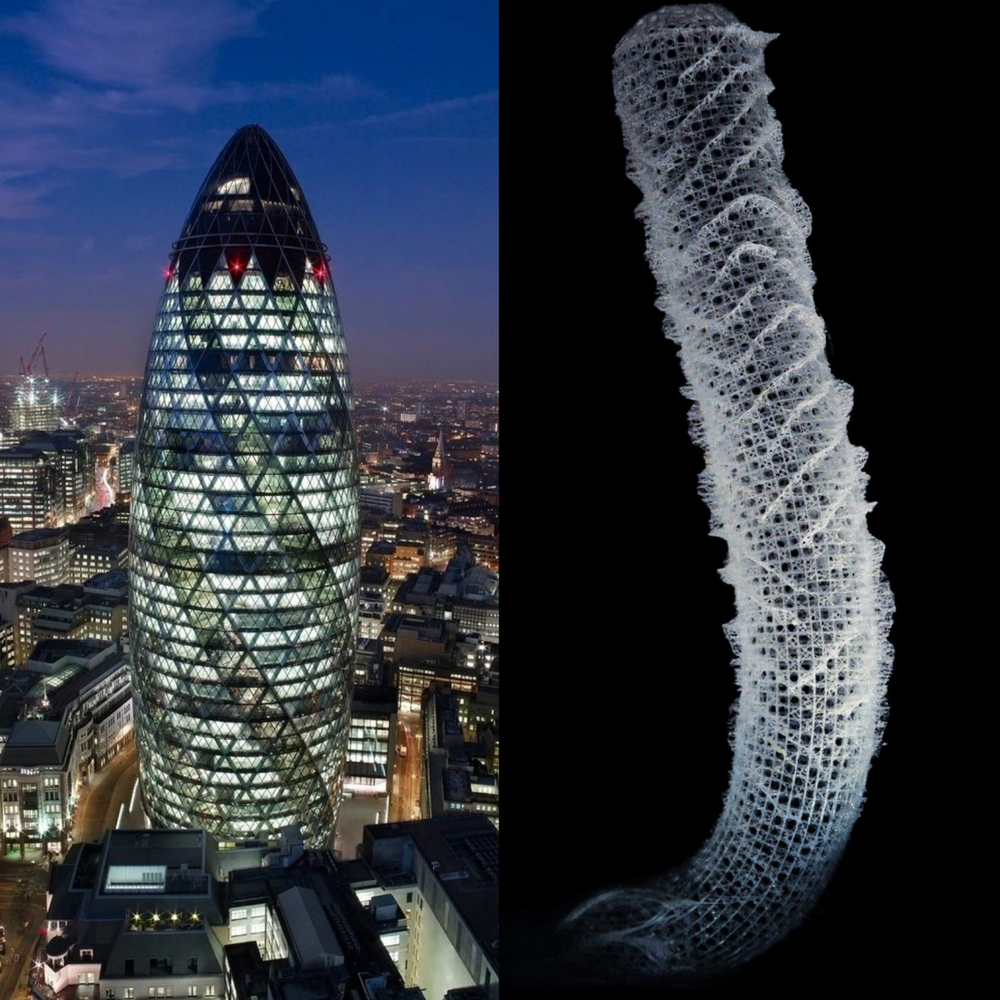
A pathetic fake (Skyscraper cigar) and a unique original (glass sponge).
Today there are three of them known. Firstly, the material. The translucent body of the animal, which seems soft and fragile, is actually made of natural glass! Sponges learned to make it from silicon long before humans developed smelting furnaces: they absorb silicic acid and create spicules from it - structural elements of their body, which form a single skeleton. This is how the spineless creature takes on a solid form. 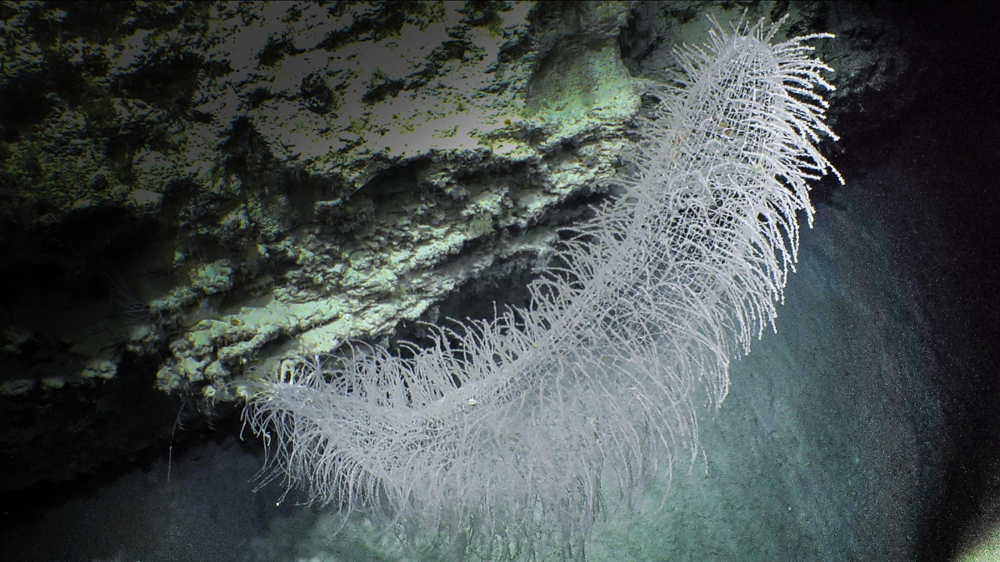
Even the “hairs” on the body of a sponge are made of glass!
Glass is a fragile thing, the reader will rightly note. And we will agree with you. But glass sponges are not. They can withstand pressure at depths of over 6 km and withstand underwater currents and marine life. And all thanks to the second secret. If you look closely at how the body of a sponge is structured, you will see not chaos, but a refined pattern. 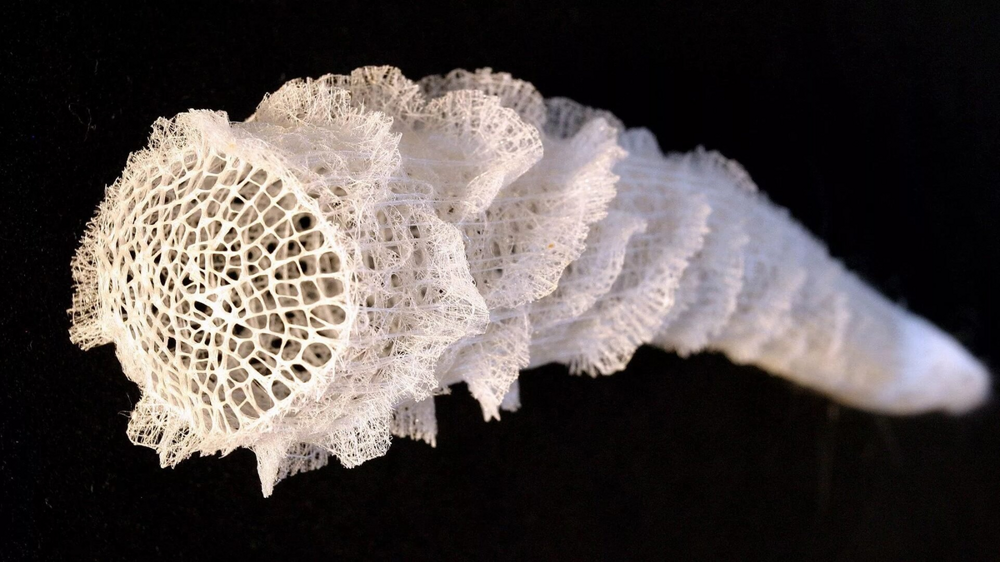
Trypophobes should quickly scroll through this photo.
Individual tiny spicules fold into fibers, fibers into lattices, and lattices into thin layers of glass-like structure. This is how the external skeleton of the sponge is formed. It is still unknown how such ancient organisms learned to build mathematically perfectly verified patterns. But they had plenty of time to think: according to some data, the lifespan of one sponge is about 15,000 years. According to others - all 40,000. 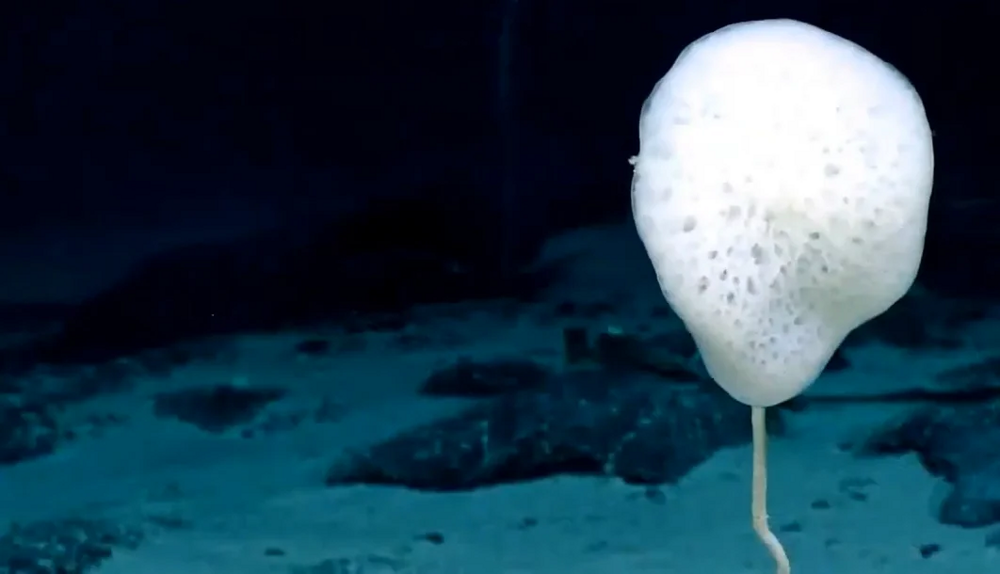
Depending on the type, glass sponges have a variety of shapes and sizes. Some look like balloons on strings.
With age, sponges acquire useful acquaintances. And this is theirsthird secret. It turns out that glassy fibers not only support the structure, but can conduct and direct light. This makes the sponges themselves neither hot nor cold, but symbiont organisms really need light. They live on, in and around sponges, helping them develop and obtain food. 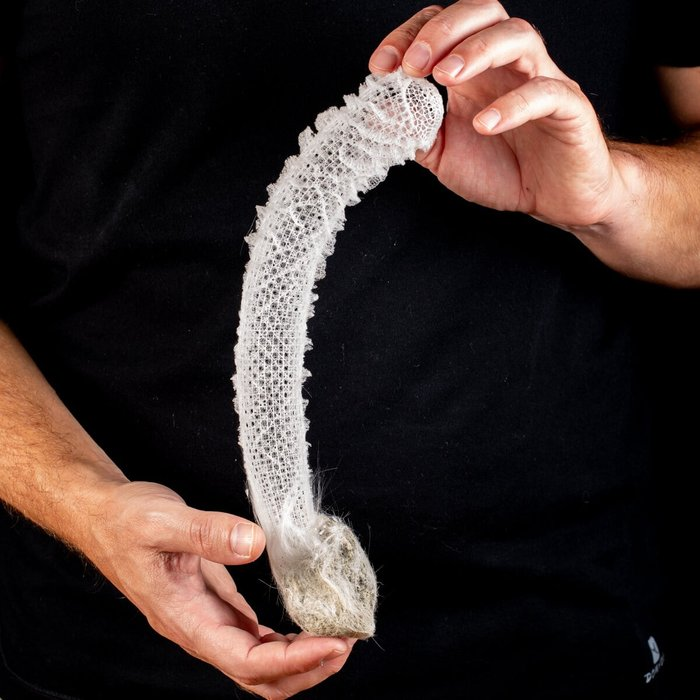
Like all sponges, our heroes are filter feeders. All their lives they peacefully pass water through themselves, absorbing the organic substances in it.
This property of animals can help with another human problem - data transfer. Conventional wires, now used everywhere, have a number of disadvantages. Fiber optics aren't perfect either. But the fibers of the skeleton of glass sponges, according to some studies, have properties that are much better than our human developments for transmitting data. Almost perfect!
Well, the saying was right: everything new is well forgotten old! All that remains is to remember, implement and remember to thank our ghostly helpers - without their developments we would have had a hard time!





